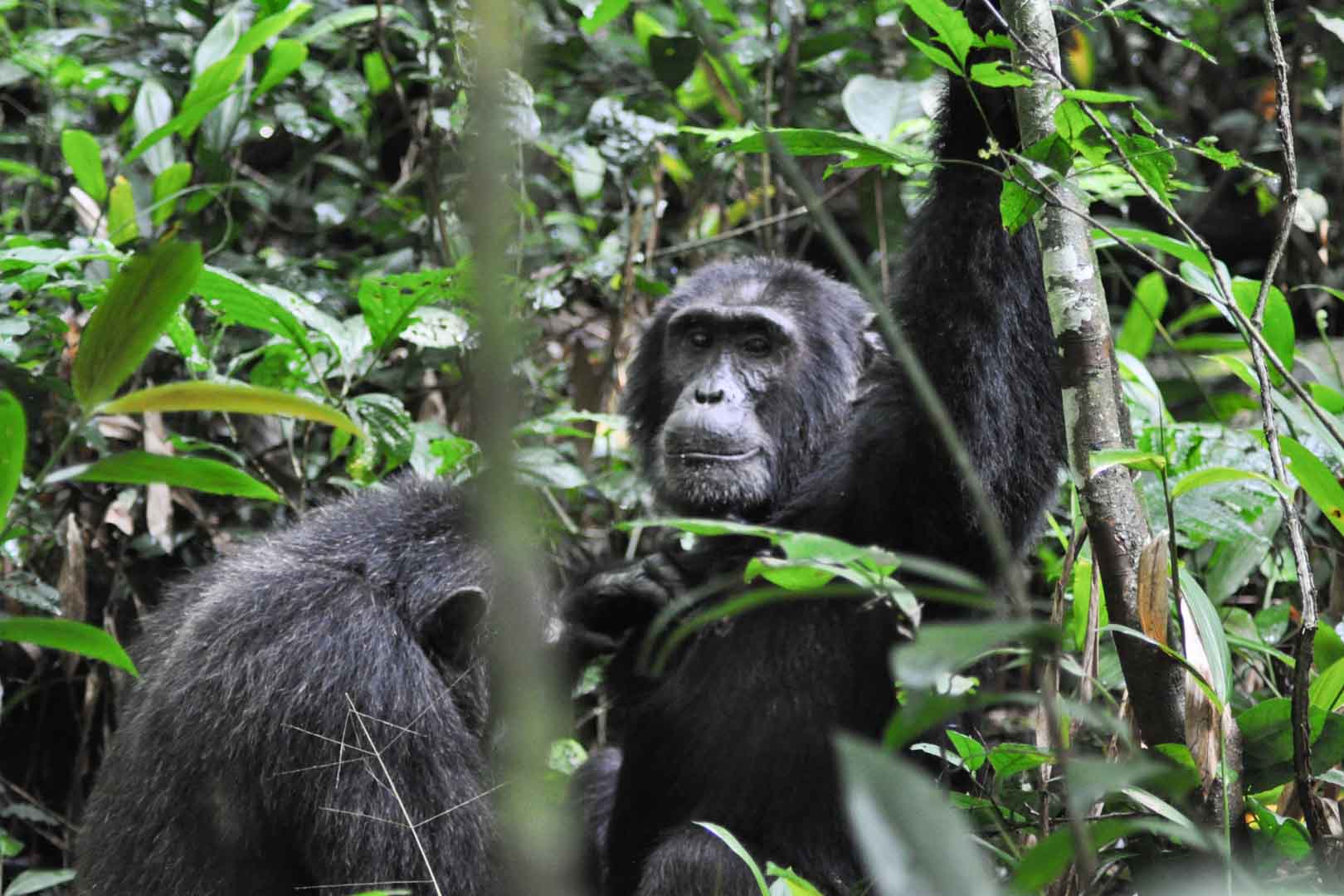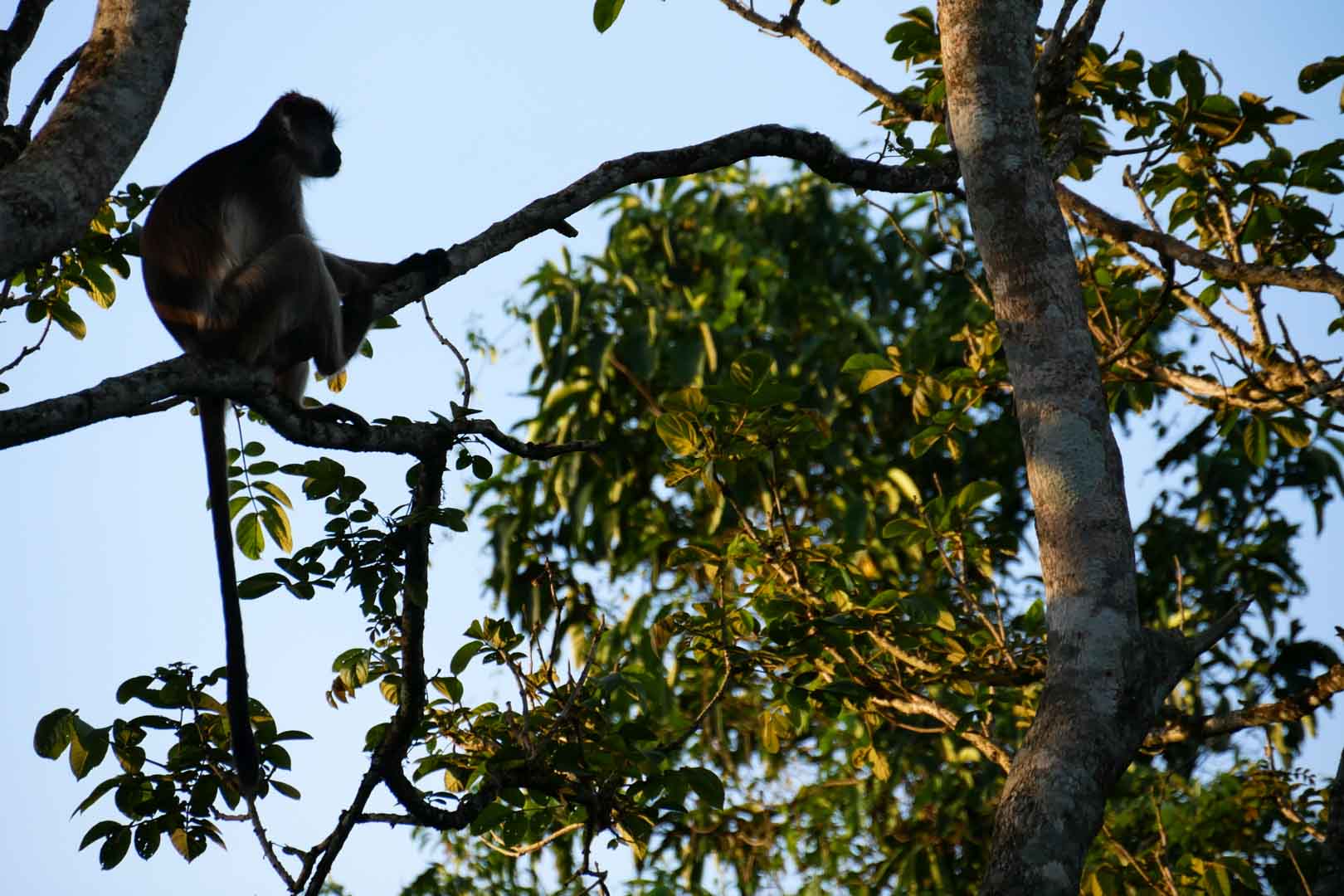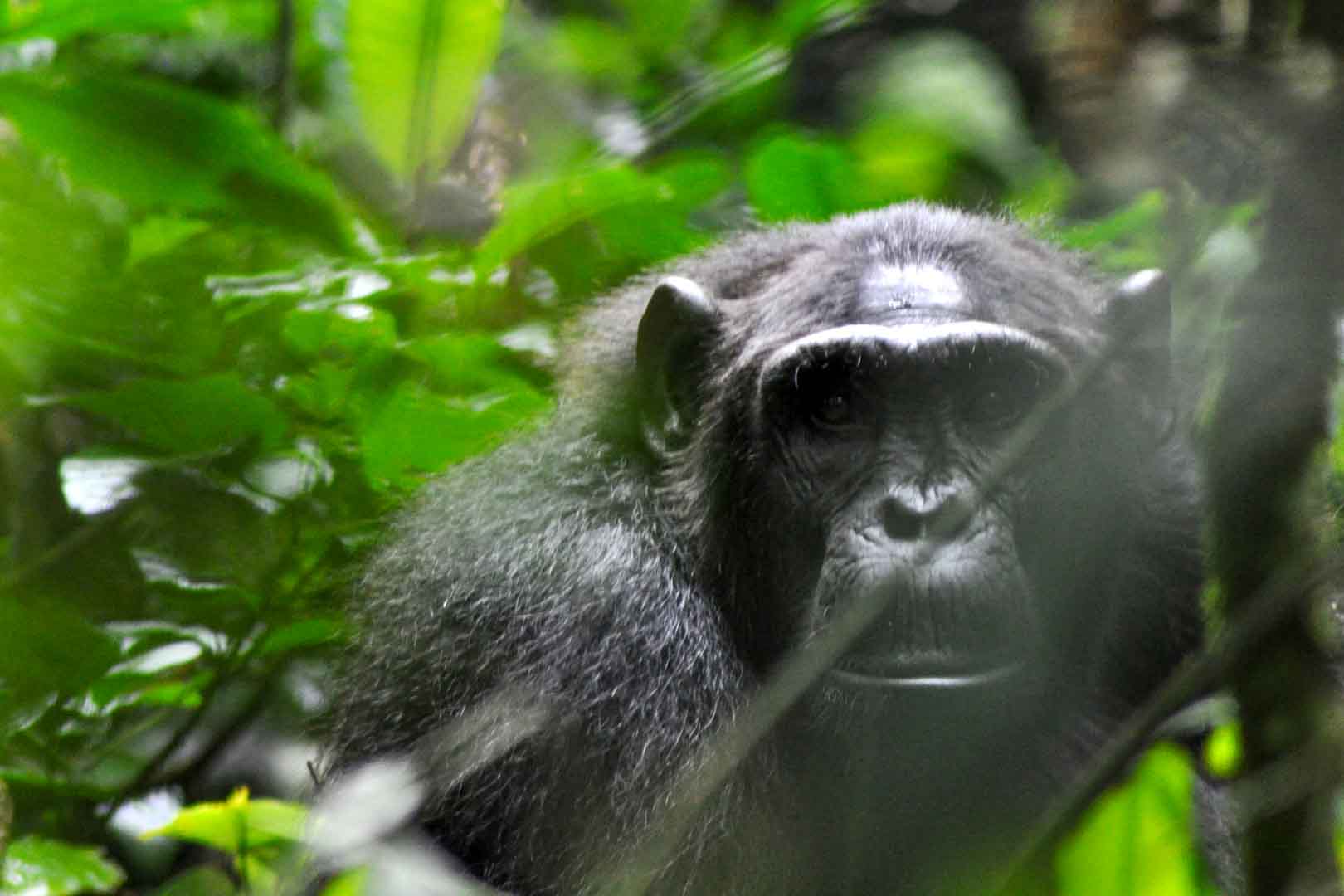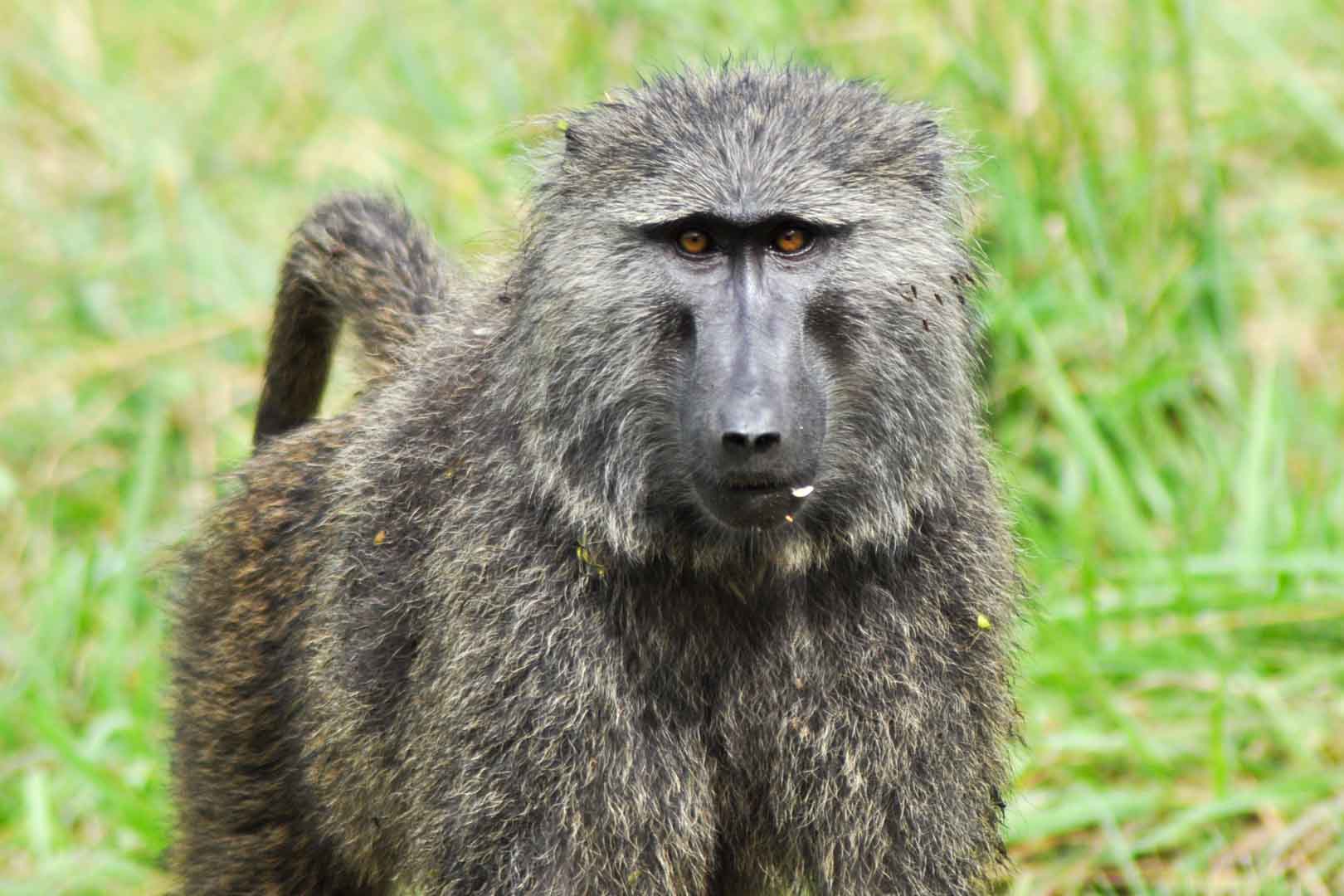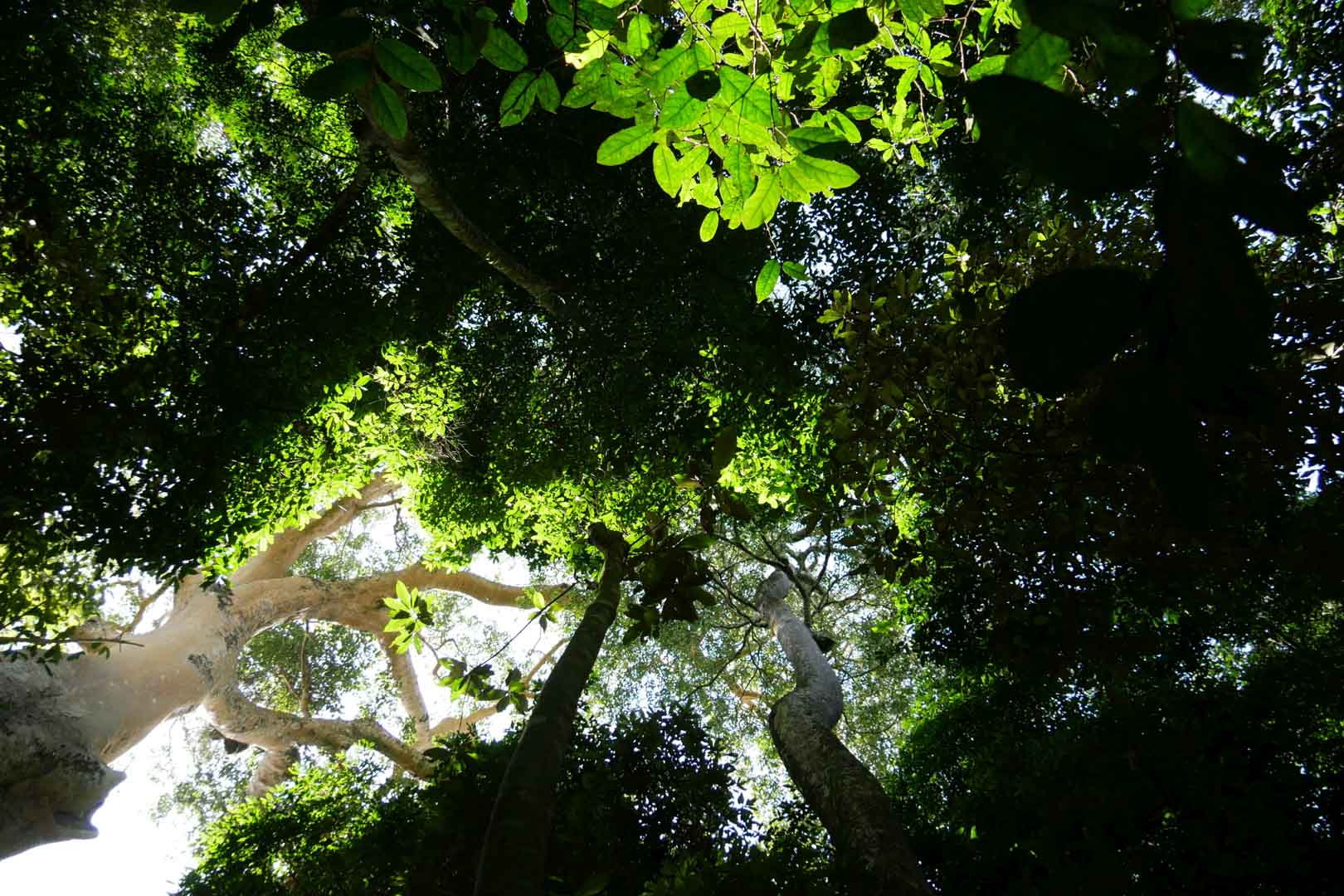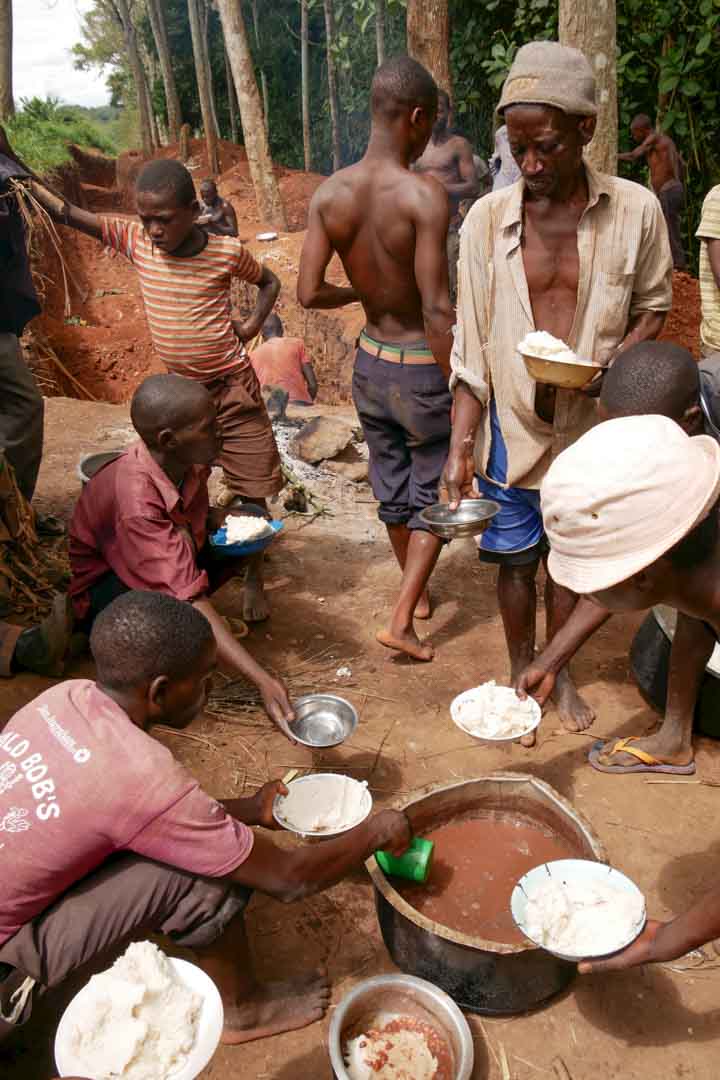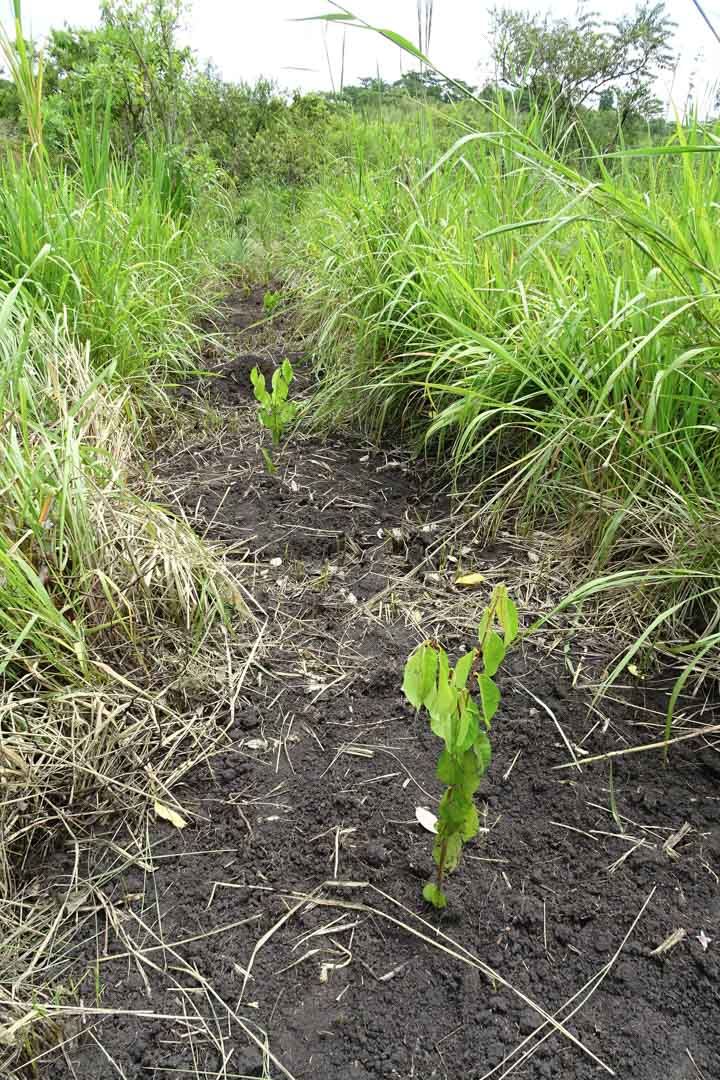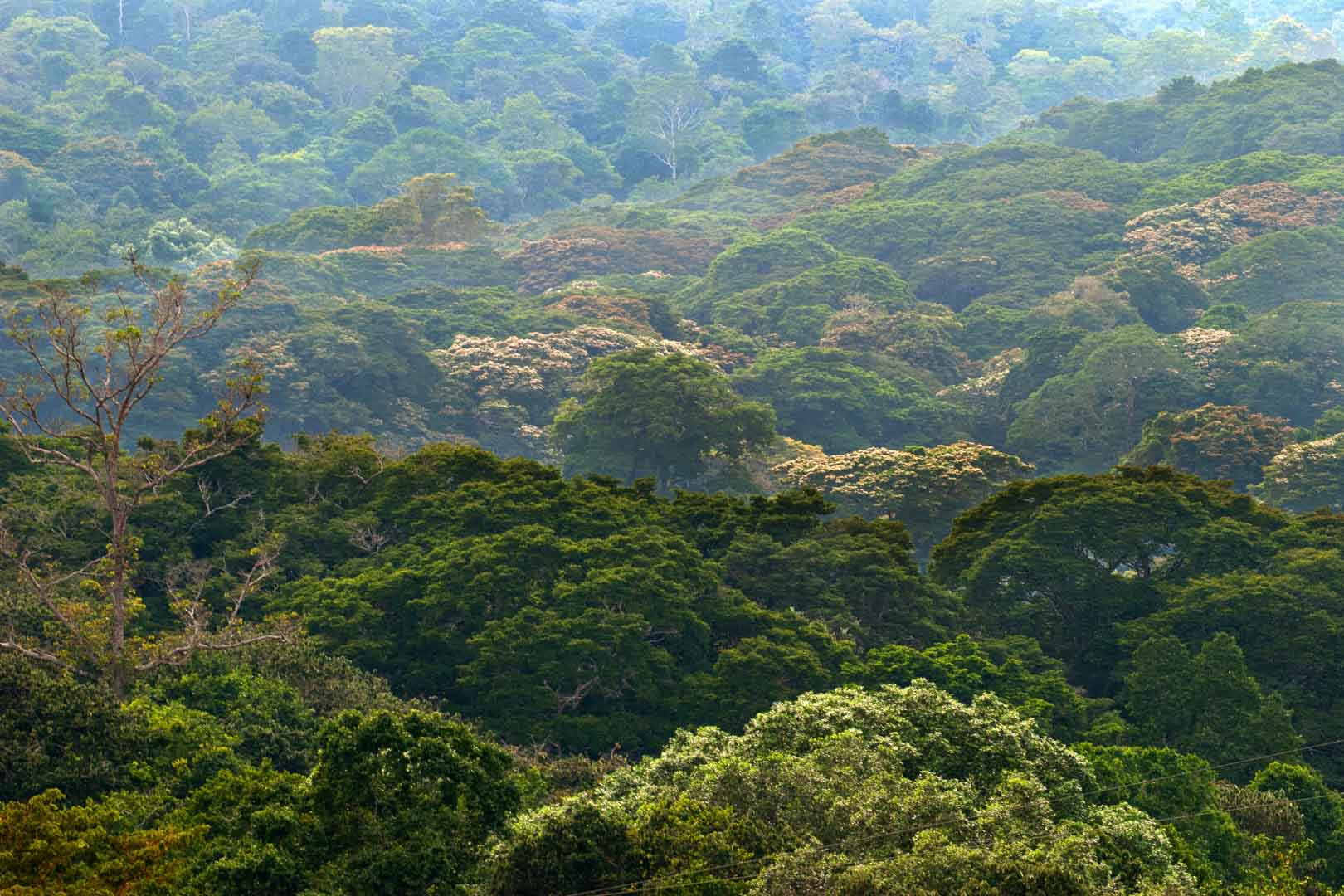Safe habitat for chimpanzees
Kibale National Park is one of the last remaining tropical forest blocks in Uganda. It harbours the greatest variety of primates found anywhere in East Africa. It is home to almost 1,500 chimpanzees, Uganda´s largest population of this endangered species. The variety of further species, like forest elephants, wild cats, birds and plants represent the intact biodiversity. Before the project, the area has been subject to severe degradation of the surrounding vegetation as well as soil erosion, due to deforestation and consumptive use of the area. Through reforestation and preservation activities, the project helps protect biodiversity and mitigate climate change on a total area of 10,000 hectares.
The project benefits the local community by providing job opportunities as a means of reducing pressure on the natural resources in the park. Local entrepreneurs have been establishing nurseries to support the project’s demand for native seedlings and tourism opportunities have been created. The project has been rewarded the FSC and CCBS certificate for its sustainable forestry, and its community and biodiversity beneficial effects.

Forests are not only among the planet's most important carbon reservoirs. They also are home to an enormous diversity of species and are the livelihood for all people. However, global forest areas have declined sharply in recent decades due to increasing settlement, agricultural use, illegal logging and mining.
Forest protection projects ensure that forests are preserved in the long term and that the protection of forests is given a higher value than their deforestation. Together with the local population, project participants protect the area from negative influences. To allow for this the projects create alternative sources of income and educational opportunities. Depending on the project region, forests store varying amounts of carbon per hectare. Particularly high amounts of carbon are stored in the vegetation and soil of tropical swamp forests, primary rainforests, or mangroves. Forest protection projects in the ClimatePartner portfolio are registered with international standards.
Explore our projects
Biochar for Climate Action, Healthy Soils, and Better Harvests

A certified climate project combined with additional commitment

Expansion of renewable energy generation in Asia

Ceramic water filters save CO2 and improve health

Improved cookstoves worldwide – for better health and cleaner air

A certified climate project combined with additional commitment

Powering access to renewable energy in Africa

A certified climate project combined with additional commitment

Restored ecosystems remove carbon

Turning degraded farmlands into healthy ecosystems

Improved cookstoves - better for health and the environment







